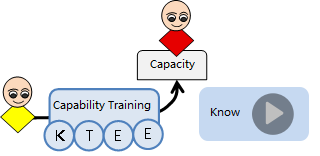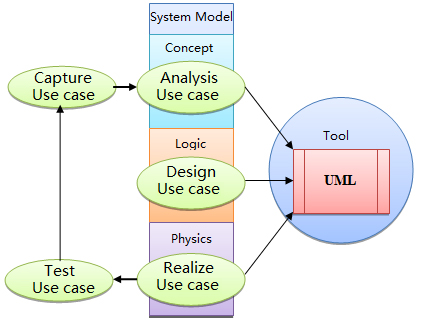|
|
| Successful Case
|
| Continental Automotive Electronics |
| Bosch Automotive Electronics |
| Schaeffler electric drive |
| Joyson Automotive Electronics |
| Huawei Technical Center |
| BMW Automotive Research and Development Center |
| Geely Auto Research Institute |
| Byd Automotive Research Institute |
| |
|
|
|
|
|
|
| Courses > Modeling |
|
 |
|
UML Analysis and Design in the Iterative Process
|
Views 
|
|
 |
|
| Zu Tao
|
| Founded uml.org.cn in 2001, 2005 IBM Rational User Group Best Speaker |
| |
|
|
| Time Location: Beijing, Shenzhen and Shanghai open classes based on registration |
| Course CostпЉЪ1300 $/Person
|
|
|
|
| Internal Training: You can customize internal training according to the needs of the enterprise. |
|
 |
Authentication Method:
Understand the competency Model before training.
Ability evaluation after training:
Online Examination
Ability Analysis, give learning suggestions
The qualified person shall be issued a certificate as proof of vocational skill qualification
|
 |
|
|
- Pitaya condensation years of experience, launched the requirements of the process guide. The course combines specific practical project cases with effective exercises and comments, so that you don't just "hear" but learn.
- Relying on UML software engineering organization, training experience of more than 300 enterprises, actual project requirements analysis, design, architecture design consulting experience of dozens of enterprises, you will have the opportunity to share the experience of senior experts
- Understand the iterative architecture process based on UML& object-oriented analysis design: In the process of software development, determine the objectives and scope of the architecture based on problems, prioritize the architecture units, and adopt iterative architecture strategies for key architectures.
|
 |
| |
| Training Goal |
- Understand the correct application method and principle of UML
- Use UML to build business model, requirement model, analysis model, design model, implementation model, test model, deployment model.
- Truly understand the demand method, deeply understand the essence of Use Case
- Learn how UML&OOAD is used in real projects
- Use the system analysis model to carry on the essential analysis
- Learn how to design a robust and easily scalable architecture
- Through practical cases, master the key skills of requirements, analysis and design
- See good and bad real cases, reflect on yourself, improve
- Learn more about how to solve real development problems
- Understanding UML&OOAD runs through an iterative, use case driven, and architecture-centric process
- How to design scalable business architecture, application architecture and program architecture based on UML&OOAD
|
| Training Target: Requirements personnel, project managers, designers, development engineers, quality personnel |
| Student Foundation: Experience in project analysis design or development |
| Teaching Method:
Customized Course + Case Explanation + Group Discussion, 60% Case Explanation, 40% practice exercise |
| Training Content: 2 Days
|
| Introduction to UML & Introduction to Object-oriented |
UML specification architecture
UML2.1 Graphics Specification
OCLпЉМXMIпЉМMOF
Core methods of object orientation |
| First time on the road |
- Focus on objectives, define scope, product definition
- Requirement capture and analysis for realistic representation
- Capture methods for various requirements
- An effective way to organize requirements
- How to get the real demand
- Domain analysis of true representation
- Domain identification, discovering domain objects
- Establish domain object model and requirement mapping
- Architecture design for real representation
- Identify architectural goals and scope
- Identify design elements, identify design mechanisms
- Design the runtime architecture
- Database design for real representation
- Detailed design for authentic reproduction
- The realization of true representation
|
| There are no end point requirements changes |
Requirements change, change maintenance
System expansion and reconstruction, system maintenance |
| Think deeply about "Why?" |
Anticipate and analyze system changes
Analytical business framework
Establish the core business framework |
| Establish an extensible Framework for the system |
Refer to product architectures and open source frameworks
Analyze the variable and invariant factors of the system
Design an extensible Framework
Reconfiguration system
Think of Framework as an Asset |
| Thinking on engineering philosophy |
Why does the same history keep repeating itself
[Harvest] Accumulate engineering assets, summarize history and predict the future
Epilogue to the Journey to the West |
Post-journey to the West * Establish an ideal course/strong>
|
Product definition
Business analysis and integration
Risk analysis
Make follow-up plan
First iteration: Identify problems, requirements, and plans
The second iteration: Addressing key risks, product design
The third iteration: product implementation, fulfillment of system conventions
Fourth iteration: Product delivery
NTH iteration: Product maintenance
|
| Model and code engineering practices |
The relationship between model and code
How do I build a model that generates code
How do I refactor the model backwards from the code
Inverse requirements based on code (forward mentioned earlier)
Code-based reverse testing (forward mentioned earlier) |
|
| |
|
|
|
|
|
| Consulting Objective
|
Help build model-driven analysis, design, development, testing |
| Scope Consultation |
Requirements Modeling, Architecture Modeling, Database Modeling, Code Modeling, Test Modeling.
|
| Consultation Method |
Model-driven development process training, modeling and management tool environment construction, combined with actual customer case demonstration, team practice guidance, model evaluation standards formulation, specification formulation |
| Successful Case |
Huawei Research and Development Center, Space Center of Chinese Academy of Sciences, Nanjing 14 Institute, China Mobile Research Institute and so on. |
| For more information:010-62670969пЉМ umlooo@hotmail.com
|
|
|
|
|
